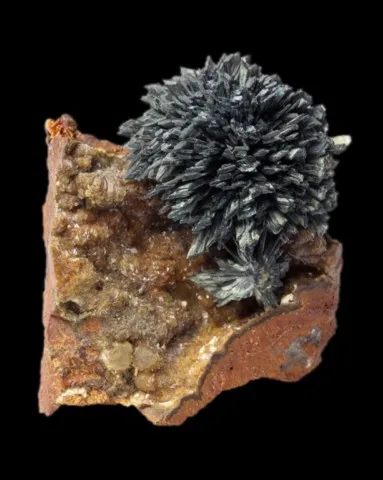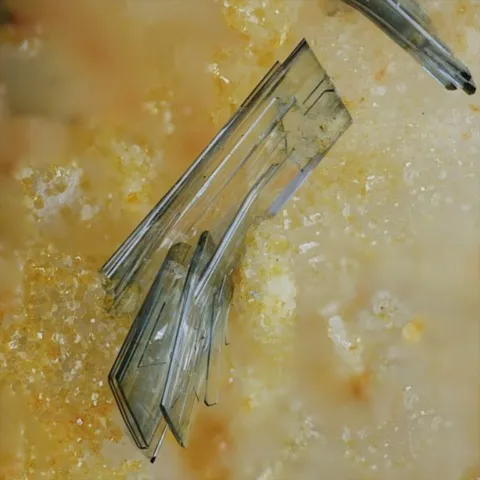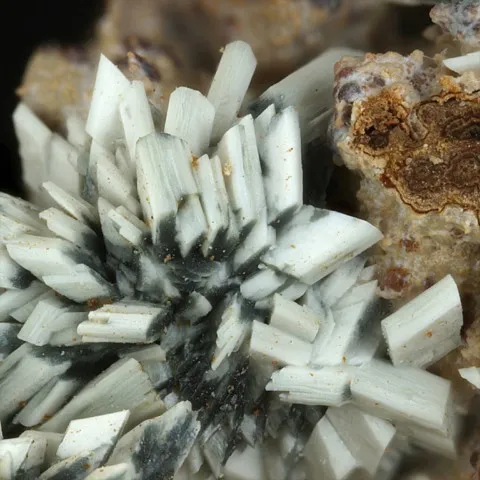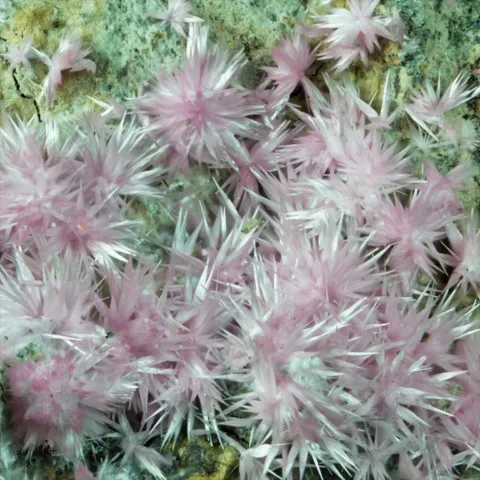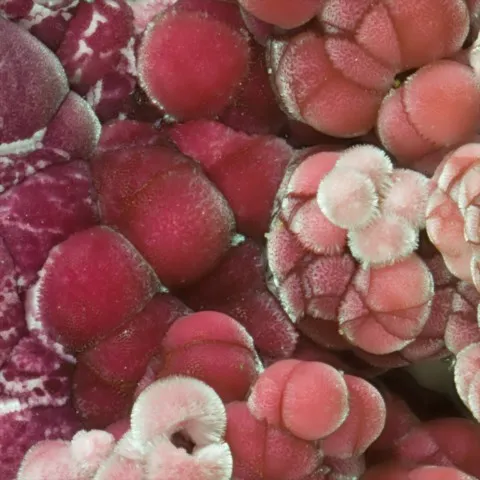KÖTTIGITE
Class : Phosphates, arsenates, vanadates
Subclass : Hydrated arsenates
Crystal system : Monoclinic
Chemistry : Zn3(AsO4)2 8H2O
Rarity : Rare to very rare
Köttigite (or koettigite) is a zinc arsenate. It is a rare secondary mineral from the oxidation zone of zinc-arsenic deposits. It was named in honor of the German chemist Otto Köttig who provided the first description of the mineral. Köttigite constitutes small prismatic to acicular crystals frequently grouped in radiated tufts, fibrous crusts, or masses. Its color is closely dependent on its composition, from a colorless or white pure zinc pole, it changes to pale pink in cobalt-bearing varieties and to dark purplish blue (sometimes dark brown) in iron-rich varieties.
Main photo : Köttigite from Ojuela Mine, Mapimí, Durango, Mexico © Xia-Dong Xu
Köttigite in the World
Twinning
No twins known for this mineral species.
Fakes and treatments
No fakes recorded for this mineral species.
Hardness : 2.5 to 3
Density : 3.33
Fracture : Fibrous
Streak : Pink to white
TP : Translucent
RI : 1.622 to 1.671
Birefringence : 0.049
Optical character : Biaxial +
Pleochroism : Visible
Fluorescence : None
Solubility : Acids
Magnetism : NoneRadioactivity : None

